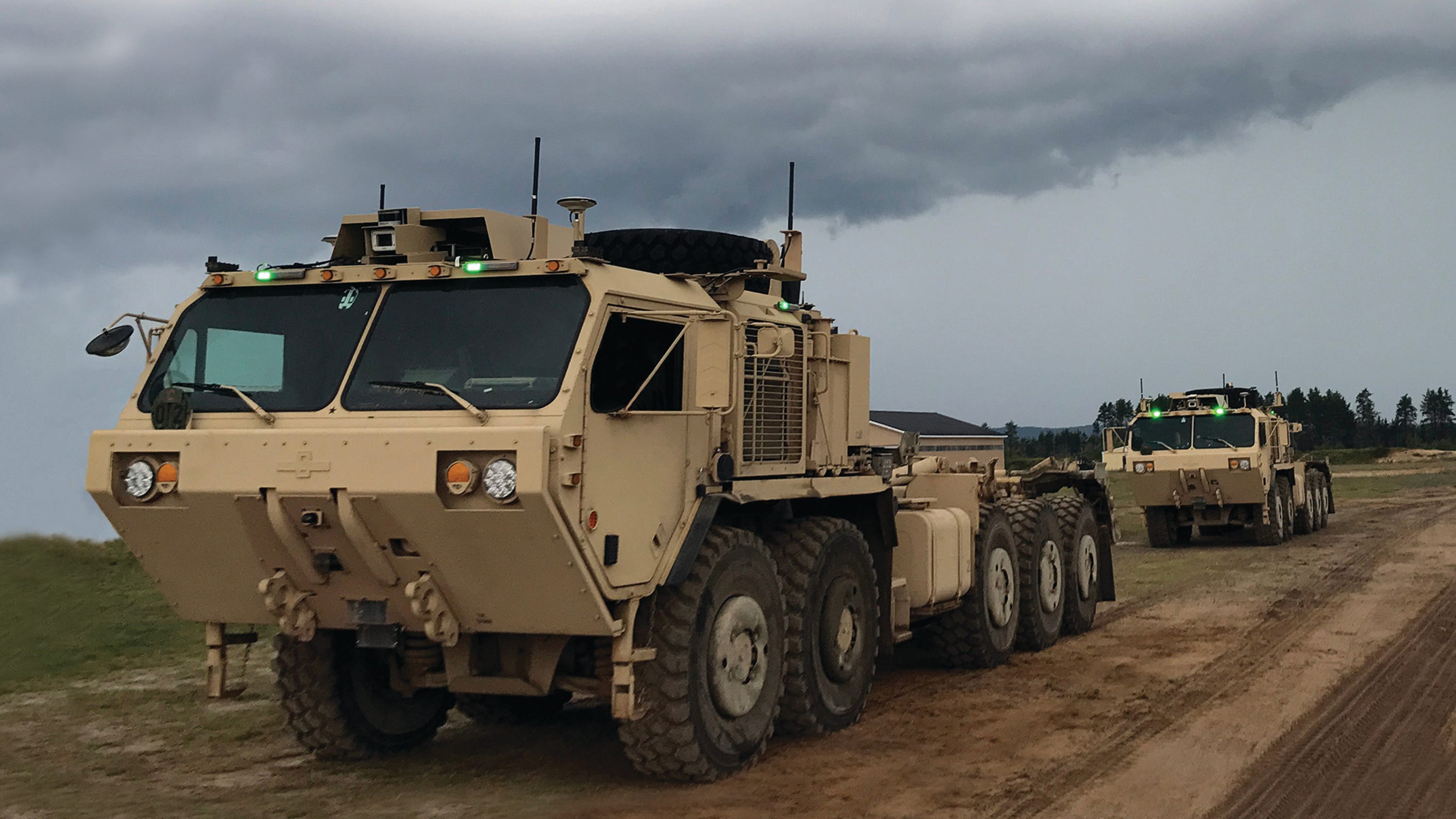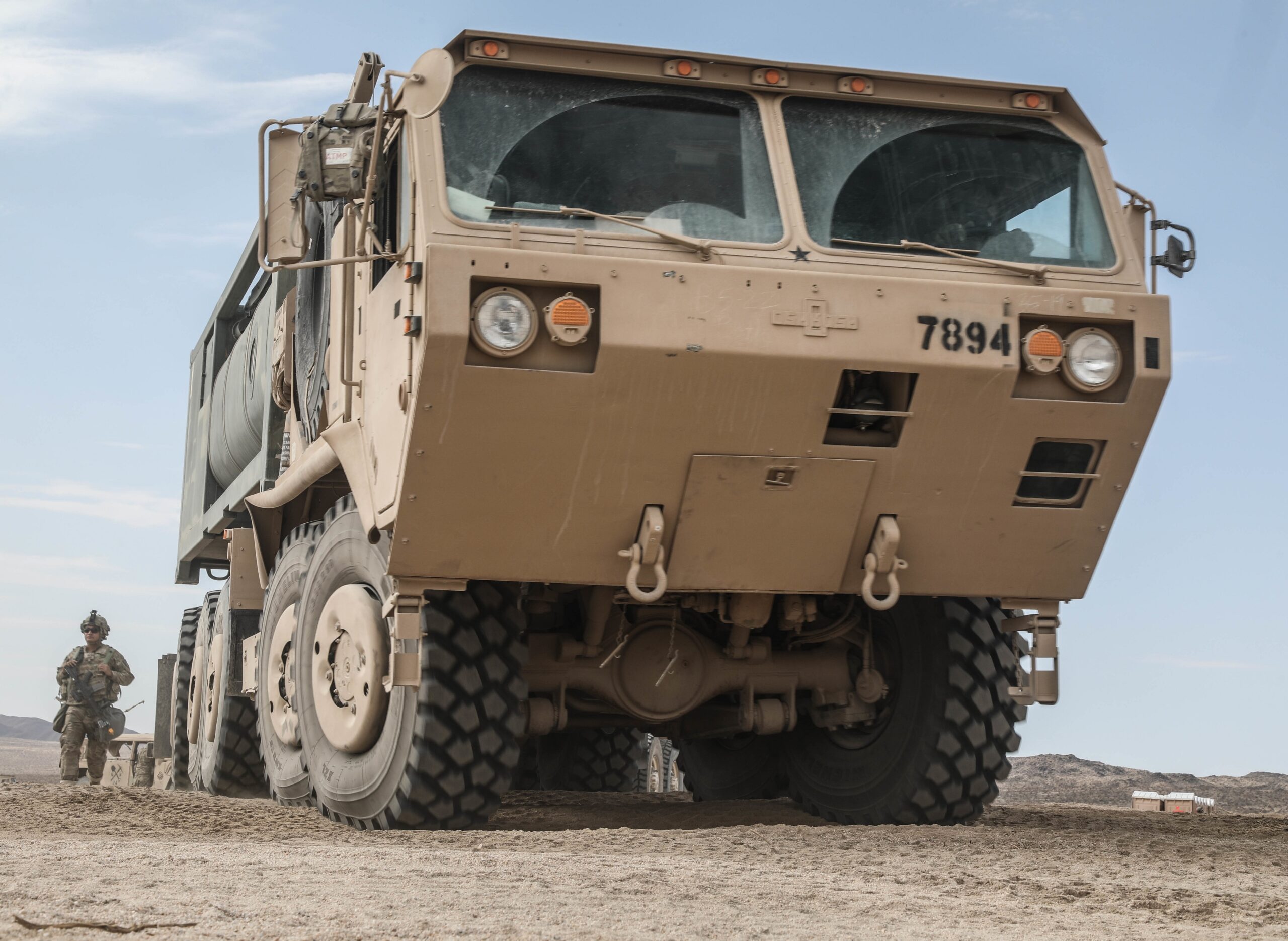Military Oshkosh - By incorporating autonomous functions, such trucks can accomplish the same mission without the need for human operators. (Oshkosh Conservation)
Simple subdivisions explain the thrust of the self-driving supply rule: for each self-driving vehicle, the driver needs fewer people and possibly one or two fewer people in the vehicle. Fewer people mean fewer injuries and deaths when convoys encounter violence, such as attacks or explosive devices.
Military Oshkosh

Then multiply: take the driver and escort from each truck in a seven-truck convoy, suddenly there are 14 to 21 soldiers who can do other things like driving other convoys, dealing with IEDs without well-armored vehicles, or It can provide additional protection. Small arms fire.
Oshkosh Images, Stock Photos & Vectors
In June, the U.S. Army awarded $49 million to Oshkosh Defense to integrate autonomous technology with a palletized load system to put a robot in the driver's seat.
"It really motivates people," said John Beck, chief engineer for Oshkosh Unmanned Systems. "Motion control algorithms both on the cable side and on the autonomous side drive this vehicle just like humans do."
Oshkosh is one of three companies producing related devices as part of the U.S. Army's Expedient Leader Follower program, which aims to add a suite of autonomous functions to the existing Palletized Load System. Oshkosh devices are wired active safety devices that connect driving controls to other devices. Autonomy comes from a device developed by Robotics Research that incorporates sensors and software that tells the vehicle what to do. DCS has developed a combat machine interface that includes a touch screen and allows people to control the vehicle.
Over the summer, Oshkosh began integrating the system on 10 trucks, with the goal of sending them to the government for quality and safety testing in early 2019. In early 2019, the company plans to integrate the system on 60 more vehicles so that they can be submitted to the government for operational work demonstrations in 2020.
Oshkosh Wins $195mln To Deliver 750 Heavy Military Vehicles
Wired active safety devices are designed to meet the needs of vehicles and are integrated into vehicle systems. These include the engine, transmission, brakes, steering wheel and more to provide full operational capabilities at idle when no one is behind the wheel. Other features are typical of luxury cars, such as frontal collision warning, road warning, launch centralization, alert, backup and more.
These features are enabled with an array of classic car radar sensors for forward warning, proximity detection, blind spot detection and backup warning. There is a camera system that provides pedestrian detection and signal recognition. The front camera is integrated with forward radar to provide better confidence in vehicle detection. The built-in camera provides a variety of surround view systems, with a backup camera and left-right and front view, as well as a bird's-eye view of the situation during movement.
"I have a lot of young soldiers who drive vehicles that do everything for them, these big cars," said Pete Williams, vice president and general manager of the Army and Marine Corps in Oshkosh. "It's just a matter of thinking that these heavy vehicles should have the same safety features as your own vehicle."

If autonomy is a point of familiarity for young drivers, reducing the number of requirements per rule is an important military goal in this plan. The Expedient Leader Follower feature is not only robotic assistance for human drivers, but also allows unmanned vehicles to automatically follow other trucks. There are also high-resolution cameras for telecommunications operations, although so far the remote operator has been shooting closer to home.
Oshkosh Wins $942m Stryker Upgun Contract, Unseating Gdls
"This is all local communication" on ad hoc networks using full 256-bit encryption, Beck said. It is a manageable layer of cyber security.
Removing the driver from the vehicle does not mean handing over control of the truck to anyone who can enter the cabin. Sensors in the seat mean that when set in robotic mode, the truck can tell if a person is inside. Often, this means allowing targeted individuals to take control of the drive if necessary, but it can also serve to prevent unauthorized individuals from entering empty cabins and attempting to take over vehicles.
After all, these are vehicles designed for war zones. Removing the driver should not mean handing over the convoy to a road worker who can find the truck. The Palletized Load System Mission form factor can carry 30,000 pounds for an eight-hour drive.
By design, this should be an unreasonable task, but the fight with extreme violence limited the majority. Removing soldiers from the careless task of self-driving vehicles frees them up to operate better-armored vehicles and spend on escort-focused missions.
Oshkosh L Atv
There does not appear to be any possibility of freeing the soldiers much here or there. But these autonomous bots are a turning point in warfare, moving the grunt work from machine to machine and allowing people to focus on the war.
Kelsey Ashton blogs about military technology for C4ISRNET, Fifth Domain, Defense News and Military Times. He has previously written for Popular Science and created, solicited, and edited content for a group blog on science fiction, politics, and international security.
The Air Force chief called for a tighter relationship between operators and buyers. Chance Saltzman told reporters today that he wants space operators to be more involved in planning future systems and defining training requirements.

Capella Space creates US government-focused subsidiary Capella Federal by forming its parent company with the National Intelligence Agency, the US Space Force and other agencies.
Oshkosh Defense, St Engineering To Develop Cold Weather Vehicle Prototype For Us Army
AI-powered surveillance sought for US Central Command Future surveillance network components are likely to include cameras and other hardware, automatic alarms, geo-tracking and virtual twins.
L3Harris provides experimental navigation satellites, bringing the laboratory closer to the first U.S. experimental site in nearly 50 years and the exploration experiment.
Emerging AI, such as the ChatGPT virus, landed on the DISA Technology Watch List. The Oshkosh L-ATV is configured and equipped in the M1278 Heavy Guns Carrier JLTV. M153 CROWS II Remote Weapon System with M2 Browning. 50 caliber machine gun
Agreement August 25, 2015; The first JLTV test was delivered to the military in 2016. Full rate production change was approved in 2019
British Army Works To Secure Oshkosh Jltv
The Oshkosh L-ATV (Light Combat Tactical All-Terrain Vehicle) is a lightweight/multi-role combat vehicle from the US military's Joint Light Tactical Vehicle (JLTV) program. In the early stages of the program, it was proposed that the JLTV would replace the AM General High Mobility Multi-purpose Wheeled Vehicle (HMMWV) on a one-for-one basis. It is now suggested that the JLTV will partially replace the HMMWV, not replace it on a similar basis.
The L-ATVs are designed to provide a level of protection comparable to the heavier and lighter Mine Resistant Ambush Protected (MRAP) class designs, which provide greater blast protection than the armored HMMWVs they are classified as. As they are replaced on deployed operations. .
Total demand has fluctuated, but as of January 2022, confirmed by JLTV Project Director Michael Spring as: Army - 49,099 (this number remains constant). Marine Corps - 12,500 (approx); Air Force - 2000 (on fund); Navy (about 400).

The Army received its first JLTVs for testing in September 2016, Col. Shane Fulmer, JLTV project manager, said at the 2016 AUSA press conference.
Oshkosh Defense's Plan To Build The Army's Next Generation Vehicles
In addition to the United States, three other countries operate JLTVs and four have JLTV configurations.
The concept of GLTV first emerged in 2006 out of threats created during the war. Iraq. At the beginning of the war, the main vehicle used by the US military was the Humvee. However, many were not armed, and the variety (including weapons, for example) was so damaged that improvised explosive devices (IEDs) began to be used by the insurgents. The first response was the armored model and basically the addition of additional armor or armor on the side. It provides better side protection against direct fire and related hazards, but since the chassis is not designed to withstand the extra weight, there is little room for protection under the chassis. The additional weight of the weapon significantly reduces the remaining useful load capacity (at the maximum gross weight), negatively affects the off-road mobility, the reliability of the vehicle, which provides greater convenience and their maintenance. Increases the needs. labor frequency and fractional cost).
To combat the increase in IED attacks, the United States immediately spent $50 billion on about 29,000 Mine Resistant Ambush Protected (MRAP) vehicles, including the Oshkosh M-ATV, for use in Iraq and Afghanistan. While MRAPs provide excellent protection against IEDs, especially low-explosives, they are large and heavy, and compact in size.
Oshkosh military truck, oshkosh military wrecker, oshkosh military equipment, oshkosh truck military contract, oshkosh military surplus, oshkosh military discount, oshkosh military, oshkosh military trucks, new oshkosh military truck, military veterans museum oshkosh, oshkosh military vehicles, military oshkosh for sale
0 Comments